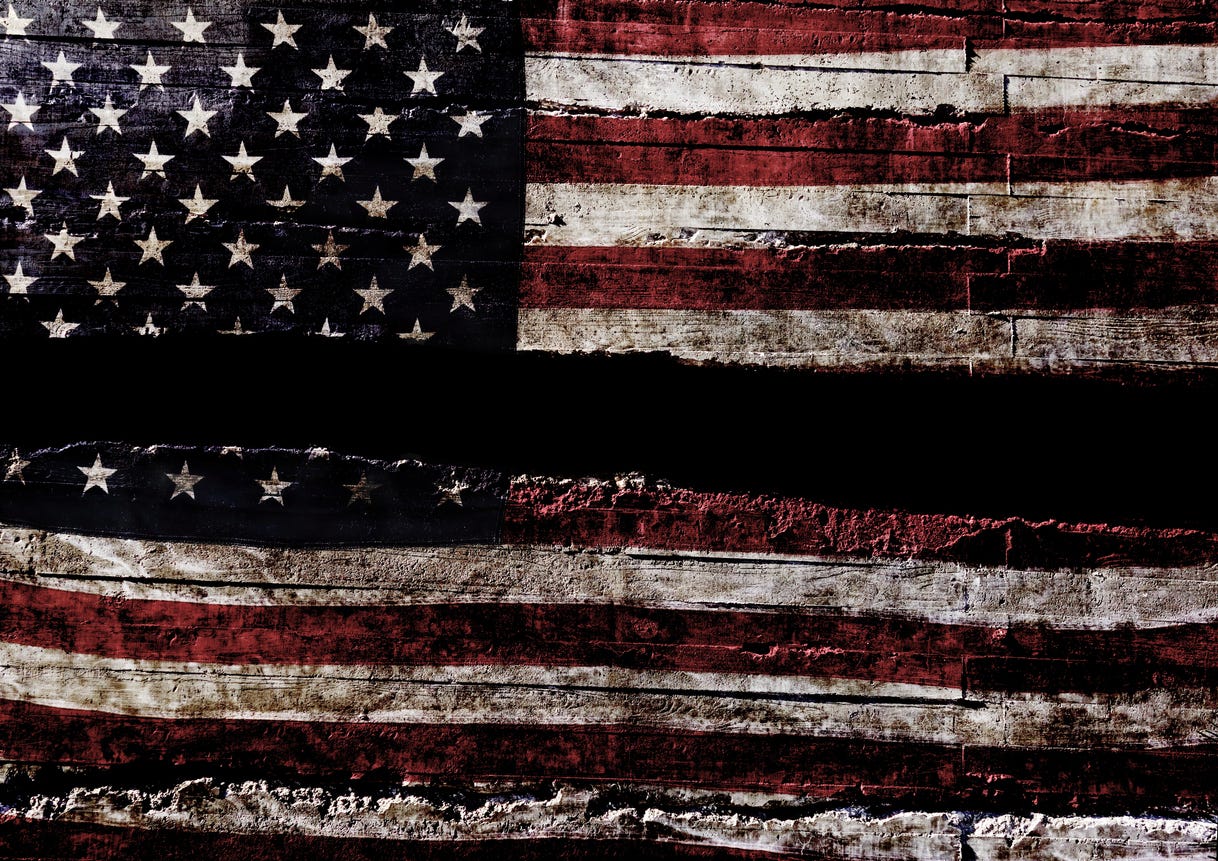
In my column a week ago, I summarized the polarizing trend in the public’s response to recent events at home and abroad. And I concluded that the national mood is one of profound pessimism and that the tribal energy among bluezone and redzone supporters has grown so desperate and Manichaean that it could easily break the nation apart.
Did I paint too dark a picture of where America finds itself right now? I don't think so, if recent polling is any indicator of how people are feeling. This is where I want to go in Part 2. Let me offer a sense of where we stand by drawing on several recent opinion surveys (from Pew Research, PRRI, and the UC Davis Violence Prevention Research Program, among others).
First, on national pessimism. When I reported, in my recent book, Pew's assessment of Americans’ confidence in their nation’s long-term future as of 2019 and 2020, I thought it couldn’t get any worse. I was wrong. It has gotten worse.

OK, now for more detail. When people say they have less confidence in America’s future, we may want to know—confidence in what, exactly? Well, let’s take a look at the following four questions. I would say the outlook is gloomy indeed.

Below are the responses to an alternative set of right track-wrong track questions asked by the PRRI. Note that the PRRI has asked the question about the 1950s eleven times since 2011. This is the highest “mostly changed for the worse” response rate it has ever registered. Especially striking to my eyes: 48% of Black Protestants agree that American culture and way of life has changed for the worse since the Eisenhower years. Keep this in mind: The 1950s ended three years before MLK Jr.’s “I Have a Dream” speech and four years before the Civil Rights Act put an end to the era of Jim Crow.

Pew has recently been fielding a similar question, asking Americans to compare life in America today to the way it was “50 years ago for people like you.” (So in this case we’re comparing circa 2020 to circa 1970.) From 2016 through 2021, Pew’s most pessimistic reading came in 2016, when 43% said worse and 35% said better. In Pew’s latest reading, taken in the spring of 2023, 58% said worse and only 23% said better.
As for the PRRI’s “best days” question, this elicits a surprisingly clear generational rift (though PRRI doesn’t crosstab these results by age). If you’re old enough to recall the Reagan-era slogan, “America’s best days are still ahead,” you may have been blindsided by 38-year-old Vivek Ramaswamy’s frosty with-all-due-respect comeback to 64-year-old Mike Pence during the first GOP candidate debate: “It’s not morning in America. We live in a dark moment. We have to confront the fact that we’re in an internal sort of cold, cultural civil war.”
Any expectations that Ramaswamy's “cold civil war” could turn hot? The UC Davis research team has an answer to that question. In the spring of 2022, according to VPRP, just over 50% of US adults agreed at least somewhat that “in the next few years, there will be a civil war in the United States.”



